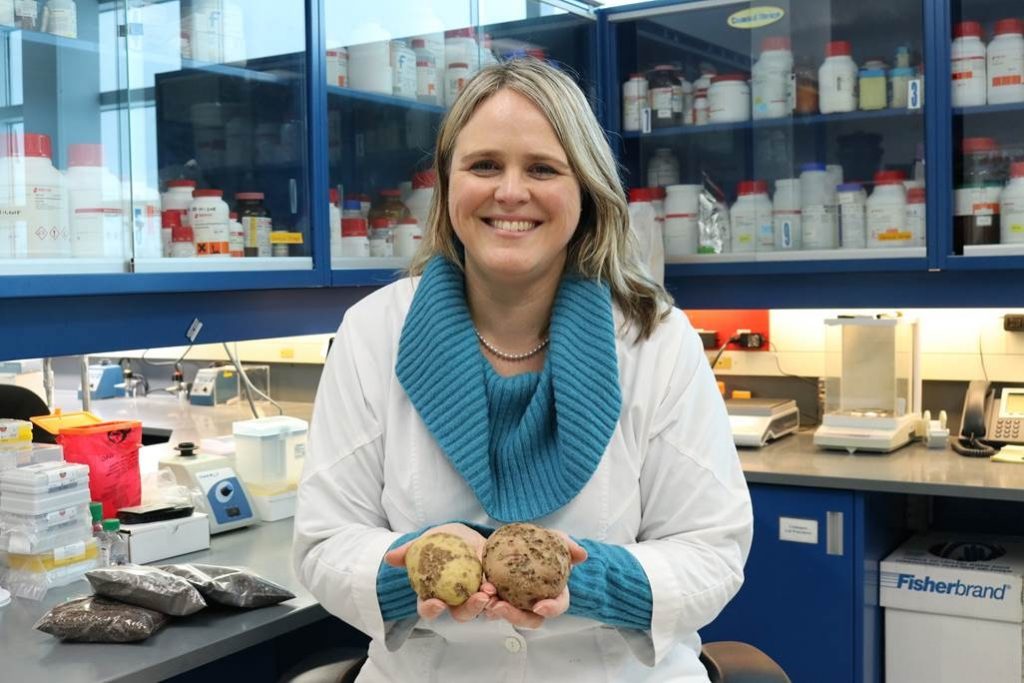
Features
Production
Vegetables
Picking away at the problem of common scab on potatoes
March 21, 2018 By Fruit and Veg Magazine
 Dr. Claudia Goyer, molecular bacteriologist at the Fredericton Research and Development Center, displays potatoes with common scab.
Dr. Claudia Goyer, molecular bacteriologist at the Fredericton Research and Development Center, displays potatoes with common scab. Fredericton, N.B. – Dr. Claudia Goyer, a molecular bacteriologist at Agriculture and Agri-Food Canada’s Fredericton Research and Development Centre in New Brunswick, says she is seeing promising results that may help potato growers get more of their products into the global marketplace.
Common scab is a potato disease caused by bacteria in the soil and while it is not a health issue for humans, common scab’s crusty lesions on potato skin can make potatoes unmarketable. The allowable limit for the appearance of potato scab on a potato is five per cent.
Building on research done in Australia, Dr. Goyer has been working with Canadian tissue culture expert Dr. Vicki Gustafson to develop natural variations of Shepody and Red Pontiac varieties with greater scab resistance.
In the lab, the researchers bathed potato tissue samples in a plant toxin secreted by the microorganism that causes common scab. As expected, the toxin killed many of the tissue samples.
Among the survivors, they looked for samples that evolved with a resistance to the toxin, and hopefully to the microorganism that produces it.
“We’re tapping into a plant’s natural ability to spontaneously change or mutate in response to stress,” says Dr. Goyer.
From the surviving tissue samples, 50 were selected for field testing and ten of those have shown improved resistance.
The Red Pontiac offshoots have been particularly promising, with 50 per cent less incidence of common scab than in current Red Pontiac variety. Researchers have been seeing up to 30 per cent less common scab in the Shepody offshoots.
Dr. Goyer is encouraged by the results, but says the evaluations will need to continue for another two to three years before the new, more resistant offshoots of the Shepody and Red Pontiac can be brought to the market.

Print this page